|
|||||||||
|
|||||||||
|
Goal: Improve student achievement/prepare students to compete in a global economy |
|||||||||
|
Why
is this goal important?
While it might be easy
to rest on our past success, tomorrow holds new challenges. If Minnesota
and its job providers are going to stay competitive and
continue to use
technology to solve some of the biggest challenges facing our world, we
need to start preparing our students to compete globally. The Minnesota
Department of Education (MDE) is
dedicated to taking our students from nation-leading to world competing.
What is MDE doing to achieve this goal?
MDE has also launched a
number of initiatives to increase student achievement and better prepare
students to compete globally. Communications Campaign: Last fall, MDE launched a comprehensive statewide communications campaign designed to encourage more students to take Science, Technology, Engineering, and Math (STEM) courses. It stressed the importance of high school achievement and the value of rigorous courses including math and science as well as the need for early career and postsecondary planning. Fall 2006 Summit on STEM: The 2006 STEM Summit brought together more than 800 high school students from across the state to inform them of the need for more rigorous coursework in the STEM subject areas.
Minnesota
P-16 Partnership:
The Minnesota P-16
Partnership, composed of officials from the education community, higher
education organizations and business and community leaders, is working
to improve the student transition to postsecondary education.
Mandarin Chinese:
This past
legislative session, Governor Tim Pawlenty proposed and the Minnesota
Legislature passed an initiative for developing a statewide articulated
Mandarin Chinese curriculum. The initiative will ensure that our
students are prepared to enter a competitive global economy. MDE brought together a network of higher
education representatives, educators, individuals who speak and write
fluent Mandarin Chinese, businesses, MDE staff and
other interested partners to accomplish the goals set forth by the
Governor Pawlenty and
the
Legislature.
The
findings are online at: How is MDE’s progress? Under legislation passed during the 2005 legislative session, schools were able to expand their AP/IB programs.
Students were informed of Post Secondary Enrollment Options (PSEO) and saw expanded access to rigorous assessments for earning college credit. Because of this increased focus, participation in AP and IB programs saw a significant increase. A proposal offered by Governor Pawlenty, and approved by the Legislature, will require that students take Algebra I by 8th grade and Algebra II and Chemistry or Physics in order to graduate from high school. The new requirement goes into effect with this year's fourth-graders. MDE continues to work aggressively with educators, business leaders and other stakeholders to improve student achievement and prepare Minnesota students to compete globally. The Governor’s Ed Council meets on a regular basis in order to help advance reform initiatives. MDE will be creating new regional Math and Science Academies that will provide professional development for all teachers and enhancements of statewide Science, Technology, Engineering, and Math (STEM) initiatives. MDE will continue to use various assessments to measure improvements in student achievement. Assessment results, along with other district and site information, can be found on the Department of Education's Report Card website: http://education.state.mn.us/ReportCard2005/
Learn more at: |
|||||||||
|
Why
is this goal important?
Reducing disparities in achievement between groups of students will enhance the opportunities for more at-risk students to succeed in life and to become productive citizens.
What is MDE doing to achieve this goal? Minnesota has also received a grant to work with seven school districts that have high drop out rates and high poverty to identify ways of engaging students so they stay in school.
How
is MDE’s progress? Under the Governor’s leadership, Minnesota now has more rigorous standards in math, science, and reading. In 2006, the new reading and mathematics MCA II were given in grades 3-8, 10 and 11. In 2008 the science MCA-II will be operational in grades 5, 8 and high school. Minnesota parents, educators and taxpayers can track the Adequate Yearly Progress of their schools by using the STAR rating system. This system continues to allow us to identify schools that are struggling so that steps can be taken to try to improve student achievement. Minnesota’s plan under No Child Left Behind is specifically geared to address the achievement gap. Under that plan, schools must make adequate yearly progress for all subgroups and cannot rely on state averages. Learn more at: |
|||||||||
|
Goal: Improve teacher quality |
|||||||||
|
Why
is this goal important? High standards for teacher quality, improved professional preparation and training of teachers, along with staff development support and access to alternative routes to professional teaching licensure, will increase and retain more highly qualified teachers in Minnesota.
What is MDE doing to achieve this goal? The Q Comp program gives participating school districts the flexibility to meet local needs within a comprehensive model of improved teaching and learning.
How
is MDE’s progress? Fifteen charter schools
are participating in Q Comp: Hmong Academy
· Crosslake Community School
·
New Visions School
·
TRIO
The districts that are participating in Q Comp enroll about 246,000 students or about 30 percent of all Minnesota students. An additional 185 districts have indicated interest in participating in Q Comp. Learn more at: |
|||||||||
|



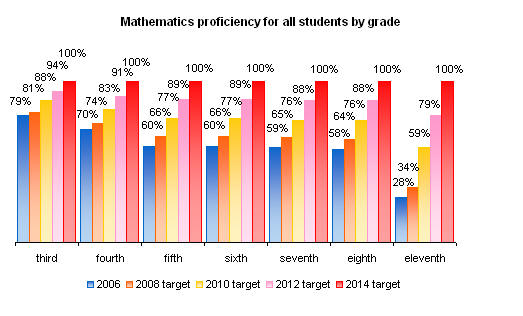
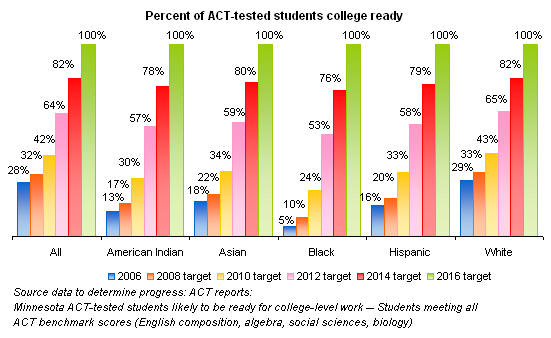
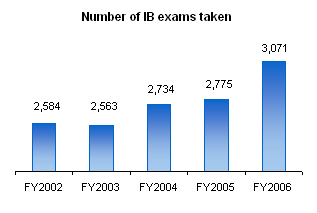
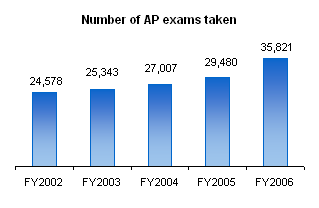

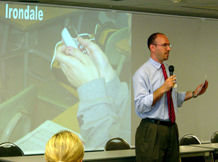 When it comes to providing Minnesota students with a quality education,
recruiting and retaining new teachers will be one of the biggest
challenges we will face over the next 10 to 15 years. Minnesota is
already experiencing shortages in critical areas such as science, math,
special education, and world languages. Thirty percent of new
teachers hired in 2001 had left the classroom five years later. These trends are
unacceptable.
When it comes to providing Minnesota students with a quality education,
recruiting and retaining new teachers will be one of the biggest
challenges we will face over the next 10 to 15 years. Minnesota is
already experiencing shortages in critical areas such as science, math,
special education, and world languages. Thirty percent of new
teachers hired in 2001 had left the classroom five years later. These trends are
unacceptable. 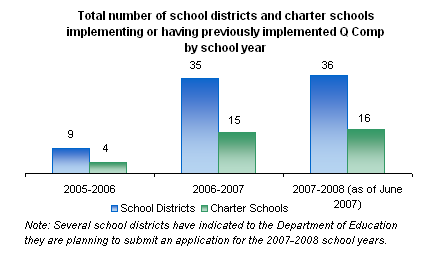 Wolf Creek
Charter School
Wolf Creek
Charter School